The work of Lake District conservation group Fix the Fells has been in the spotlight recently, after controversial repair work was carried out to the classic trail of Boredale Hause. Now fears are being raised that some of the best descents on Helvellyn, the mountain featured in last issue’s Classic Ride, could be about to get the same treatment.
The Fix the Fells website lists all their current and future repair projects, including several routes on Helvellyn. The Boredale Hause work involved extensive use of a technique known as stone pitching, which can turn a steep but flowing trail into a jarring rock staircase. This prompted a strongly negative response from the local mountain bike community, with one rider starting an online petition against the use of stone pitching which attracted over 900 signatures. The backlash made the local paper, and even BBC local news. Fix the Fells agreed to meet rider representatives from the Lake District Mountain Bike Association, and gave a reasonable explanation of why the work was being carried out, but it’s fair to say that some scepticism remains as to whether Fix the Fells are actually improving trails for anyone, except users on foot.
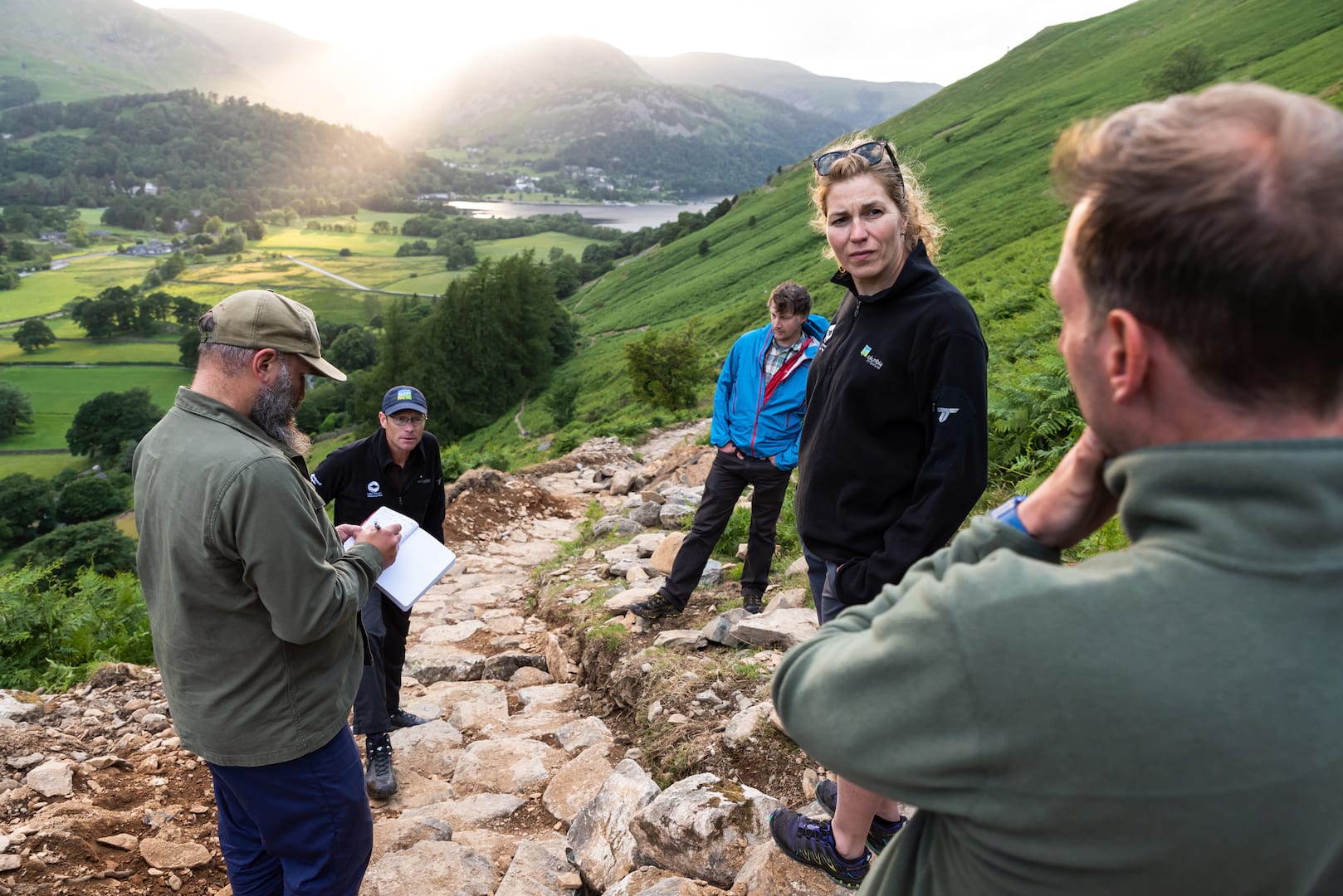
Meanwhile, over on Helvellyn, the bridleway from Glenridding to Kepple Cove has already been repaired using diggers. Further work listed includes Sticks Pass, a must-do descent for many mountain bikers. With forums and social networks still humming with talk of trail sanitisation, we caught up with our very own Lakes correspondent James Vincent to find out what was going on, and he also kindly put us in touch with Richard Fox from Fix the Fells, who was only too happy to chat about the work they were doing.
Latest Singletrack Merch
Buying and wearing our sustainable merch is another great way to support Singletrack
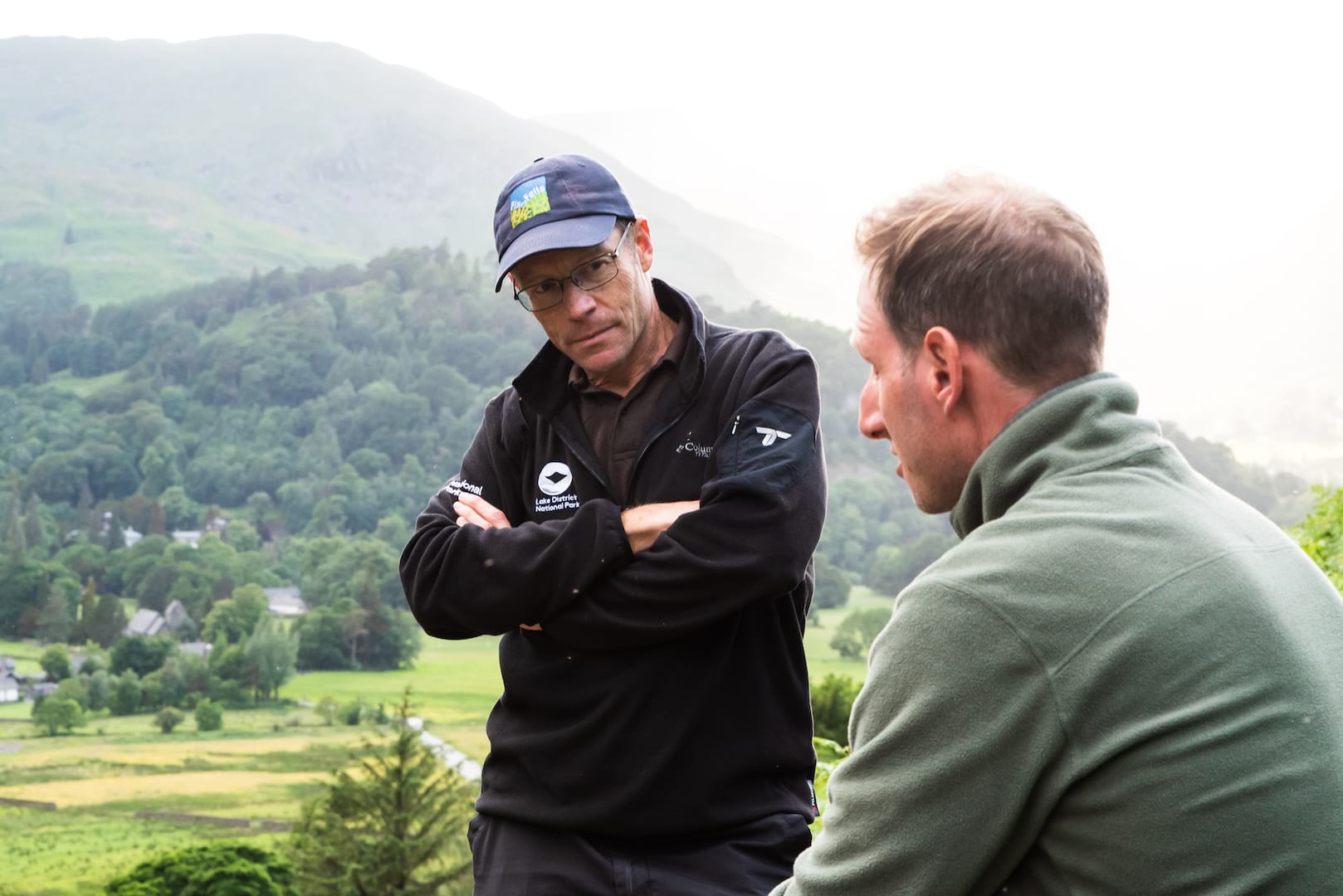
According to Richard: “We’ve got a machine on Raise at the moment which will move on to Sticks Pass. It was repaired 8 years ago and washed out during Storm Desmond [the notorious extreme weather event at the end of 2015 which inundated the nearby village of Glenridding]. We’re not going to repair anything below previous works.”
Another trail on Fix the Fells’ Helvellyn to-do list is Nethermost Pike to Wythburn. “Going back to 1999-2000 Nethermost had been shortcut and was eight metres wide in places. You could look over from the neighbouring fells and see a track that looked just like a white road.” Post-Desmond, the track has again turned into a massive rut and again the plan is to fix this sensitively using on-site materials. “The soil inversion technique we’re using isn’t going to change what’s there already. All we’re aiming to do is replace the ruts with a cambered path to improve drainage.”
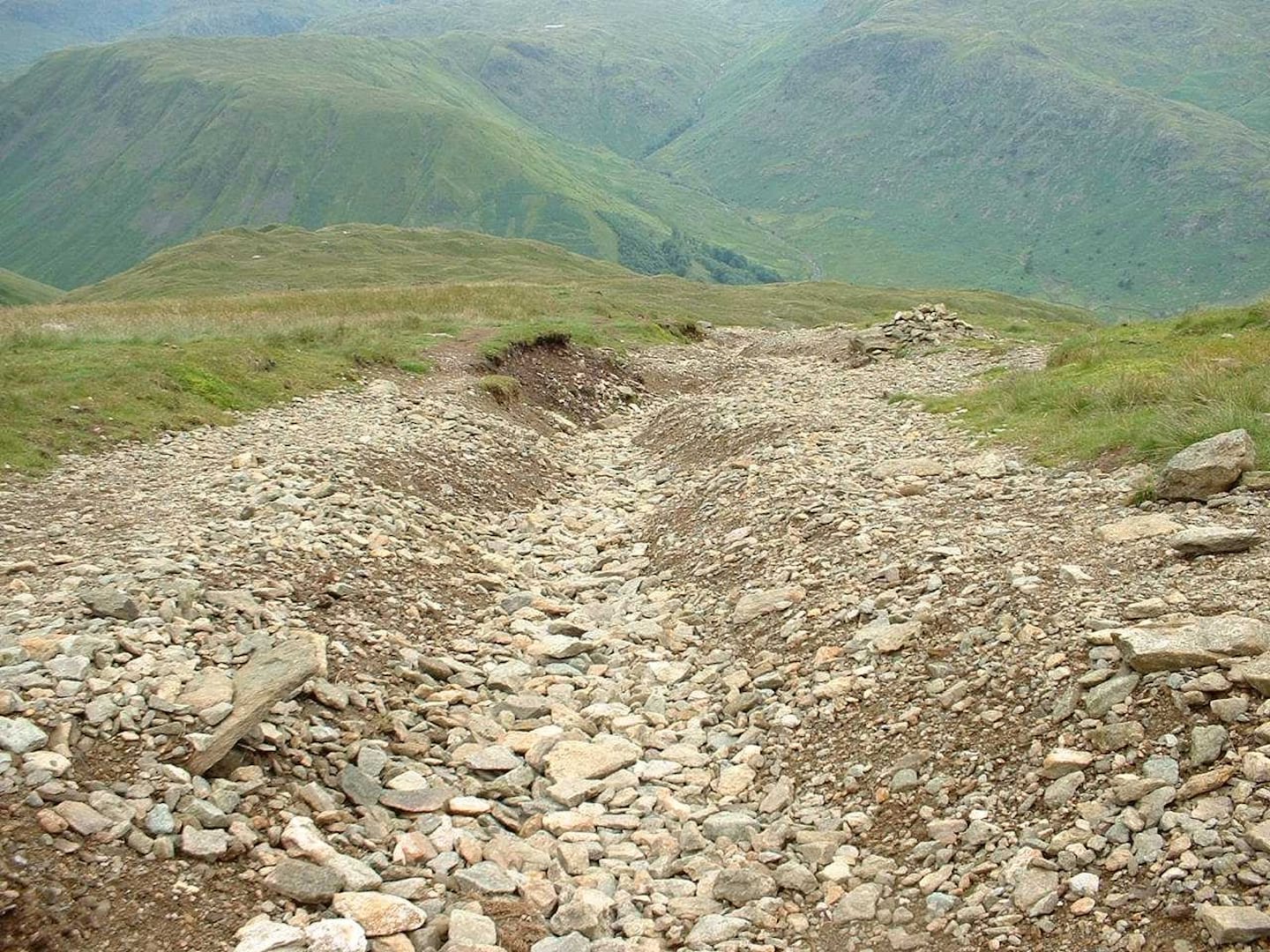
On the subject of the dreaded stone pitching, Richard recognises that it won’t suit all users, but is adamant that it’s the only way to make lasting repairs to steeper trails. “As soon as a trail gets steeper than 15 degrees then aggregate doesn’t work – it just washes out and ends up at the bottom of the hill. On Boredale Hause, after Storm Desmond there was a 14-foot pile of material at the bottom which had been washed down the trail. We’re trying to maintain 330 fell paths and we receive no funding other than what we raise ourselves, so we can’t keep repairing trails ad infinitum.”
I mention Dollywagon Pike, another Helvellyn path where Fix the Fells’ work has created a seriously challenging trail that requires full commitment to get down smoothly, thanks to a mix of stone pitching and fearsome water bars [stone-edged drainage channels that cross the trail at a right angle]. “That’s a trail that was widening by a metre every year” says Richard. “Work started on it back in the 1990s and to be honest we didn’t think anyone would be cycling down it. Bikes and riders these days are much more capable and if we did it tomorrow some things would be different. When we put water bars in now, they all have some form of exit or escape route so that cyclists can avoid the raised stone edge. None of us really like stone pitching but in certain places it is the answer.”
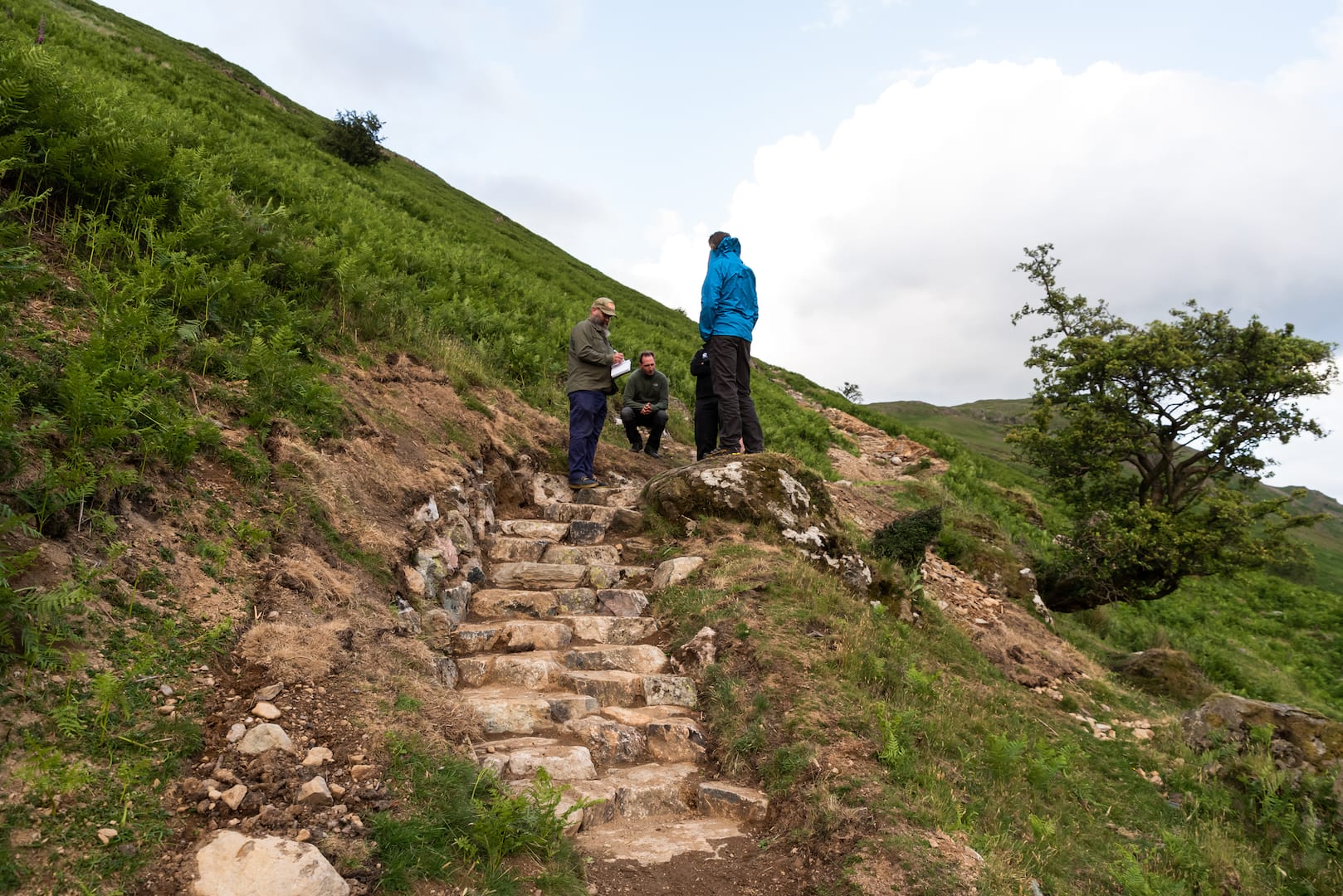
Richard strongly disputes the accusation that Fix the Fells are ignoring a major user group when they carry out repairs. “Our work would be pointless if we didn’t factor in all path users. If we create bridleways that are impossible to cycle on then people will just ride off the track, and we don’t want that. Purpose-built mountain bike trails like Whinlatter are surfaced with aggregate and require a large amount of maintenance, which is only possible because it’s a relatively short bit of trail. We’re fixing bridleways, not creating mountain bike trails, and there have to be some compromises. All our work is done to nationally agreed best practice guidelines set out by an Environment Select Committee, which apply across the UK in England, Wales and Scotland.”
Going forward, it looks like Fix the Fells are keen to engage with mountain bikers, and the Lake District Mountain Bike Association have been asked to consult on their planned works for next year. “We fully understand where the objectors are coming from” says Richard. “I’m always happy to go out with mountain bikers and explain the work we’re doing.”
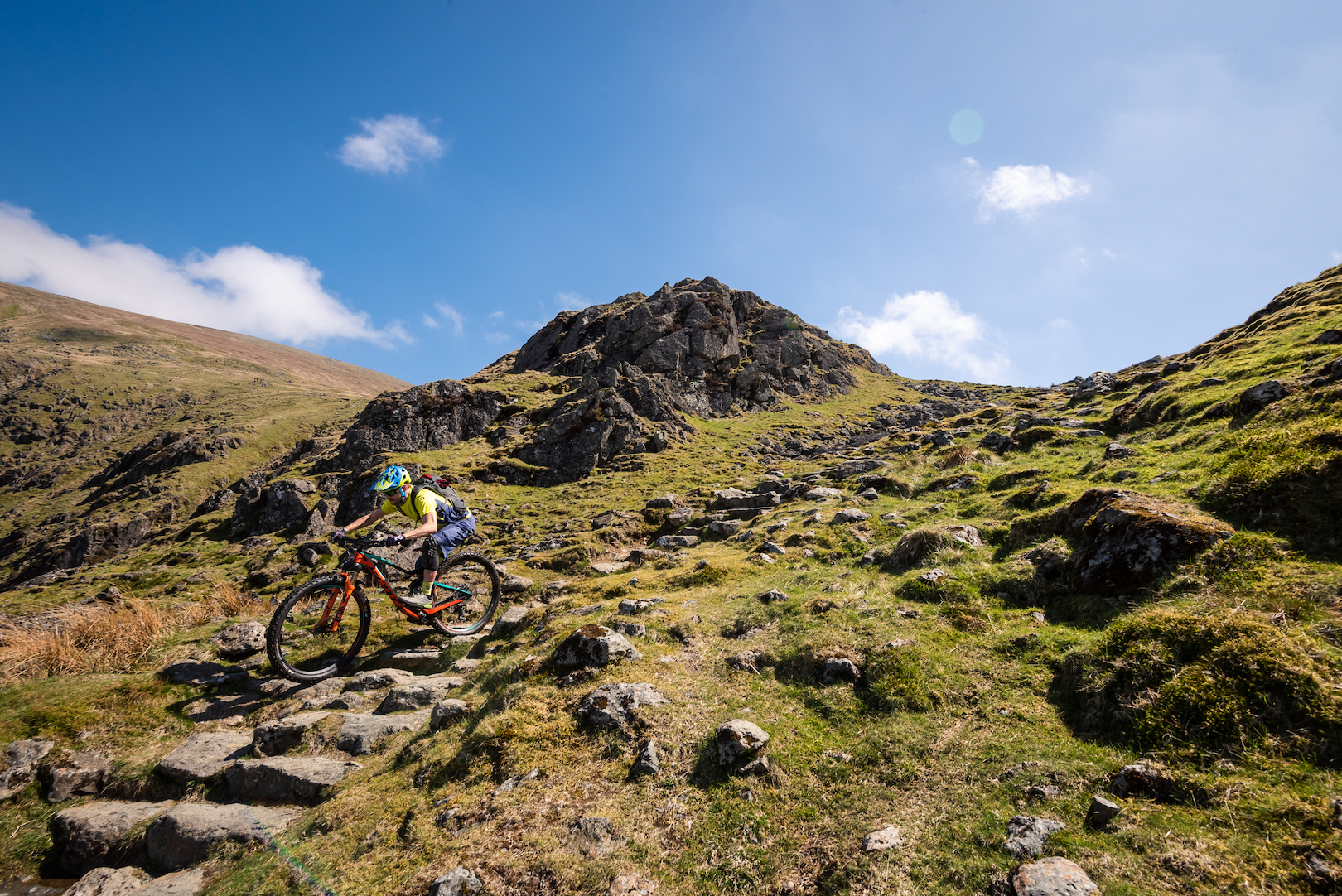
We also contacted the Lake District Mountain Bike Association for a statement; here’s what they sent us:
“The extent of the works on the Boredale path seems shocking to those that have loved riding there for very many years.
“Having met with Fix The Fells prior to the work commencing, we felt that a second site visit was needed, so on the 14th of June we met with Richard Fox of Fix the Fells to discuss our concerns about the amount of stone dropped on to the trail and its implications to the trail repair. In short, the reason for all of the work is because of the interconnected problems of drainage and stability, combined with the high volume of traffic and proximity to houses.
“In our opinion, the need for any repair intervention is always debatable – however once the decision has been made that repairs are going ahead, we have found that it is very hard to argue against the logic of the extent and methods used by Fix the Fells.
“We look to becoming involved at an early stage in the decision-making process on all future works that Fix The Fells are planning. In this way, we should be able to influence whether a repair intervention is necessary, and that any repairs are undertaken with mountain bikers in mind. We recognise that the current LDMBA committee lacks experience in trail building techniques, so we will be reaching out to the wider mtb community for riders with this knowledge.”





Seems fair to me…..
Good to see a dialogue here, it’s a different story to Derbys CC. I agree that maintenance is going to be needed in many places, otherwise the trail spreads out into a 6m wide set of ruts, which just accelerates water damage. A big gravel filled chute might be fun, but it’s not sustainable. Getting a specification that works across different types of use (not user groups a sometimes I walk, other times I take a bike) is where we can help. The rhythmic thump thump thump of regular steps can be grim on a bike and on foot after a while, but ok for short sections. The photo of Will has a clue to a possible solution- part of the width of the track is a rounded boulder which is his chosen line just there.
Regardless of bikes, stone pitched staircases must be a nightmare for horses.
@chipps – apparently you just need to be able to lead a packhorse along a bridleway, so the pitching is acceptable (according to FTF). Having said that, I don’t think anyone likes the pitching – we’ve had negative comments from fell runners, walkers, horse riders, etc and we’re trying to set up a multi-user group to keep FTF honest in all future works.
Similar issues in the Ochils where the Dumyat Tourist path which was a wide path well used by walkers, runners and MTB’rs was “improved” using funds from a Mitigation scheme following new pylons erected in the area by SPEN. The resultant path has ruined the hill for bikes and reduced what was a great hill path for everyone done to a 1.5m wide path of Grade1. A group of concerned local bikers did try to prevent the works and succeeded in limiting the scale of work but ultimately the finished article has spoiled the character of the hill. For me the key issues are that MTB’rs have no cohesive voice and the independent expert brought in to help bring about a solution even acknowledged this was a problem. The path now forces all users onto a narrow strip of land leading to conflict in respect of rights of way, whereas prior to this there was always room to go around or to the side. Good luck to you but I fear this is the immediate future.
Good Article.
health horizon!
I spent many years riding in the Lakes before moving to Australia. Every time I come back to see family and have a biking holiday up there it seems that more and more trails are just wide crushed roadbase paths. Elterwater and lower Garburn being two that brought a tear to the eye when I was taking a good friend around a few years ago (after telling him about this awesome technical bridleway).
What’s the term they use? Access for all… Sadly with the advent of the aggressive 40/50yr old on the electric motor bicycle (who feels like he did when he was a fitter, younger man) I can only see conflict with conservation groups and Ramblers going forward.